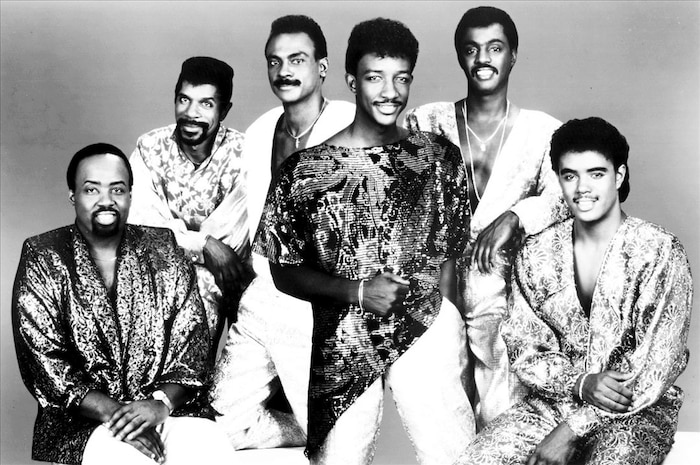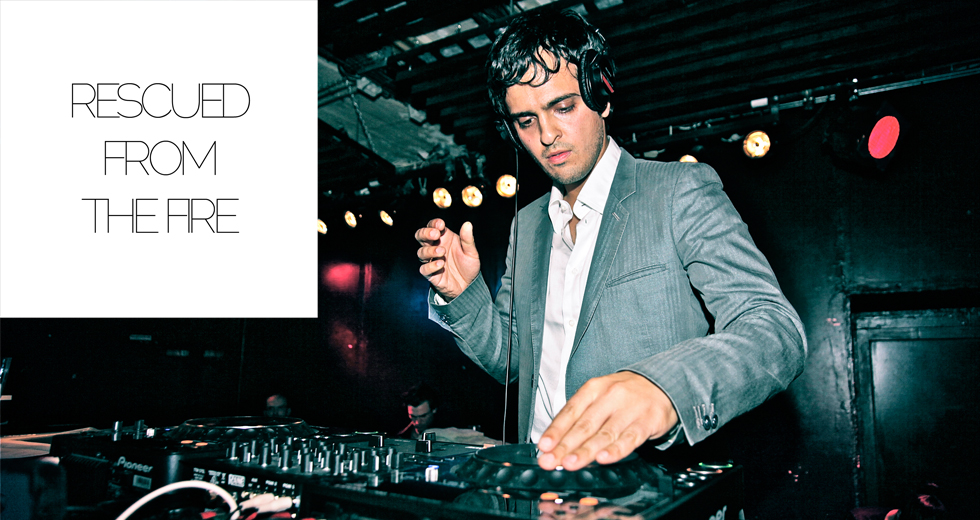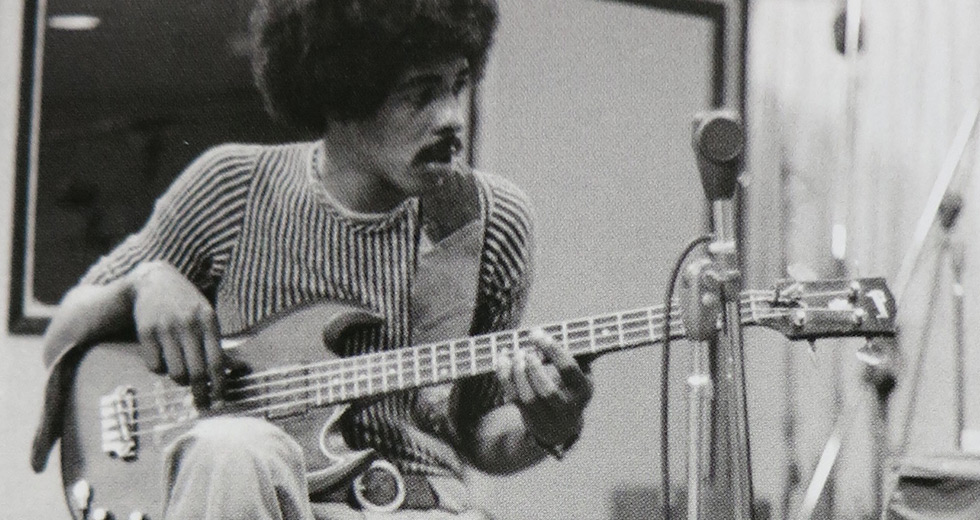Key Tracks: Kool & the Gang’s “Ladies Night”
Ronald Bell recalls the recording process behind the smash hit from Kool & the Gang.

Kool & the Gang had experienced a string of hits earlier in the ’70s with “Jungle Boogie,” “Funky Stuff,” “Hollywood Swinging,” and “Summer Madness,” but their respective careers were at a crossroads by the end of the decade. With the assistance of producer Eumir Deodato, they decided to take their sound in a more pop-friendly direction. After receiving advice from famous record impresario Dick Griffey, the group brought on James “J.T.” Taylor to serve as a lead vocalist, and on September 6, 1979, Ladies’ Night was released by De-Lite Records. Ladies’ Night spawned three singles, including the number one smash “Ladies’ Night,” “Too Hot,” and “Hangin’ Out.” For the album’s 35th anniversary, we spoke with the group’s legendary founder and musical director, Ronald Bell about crafting this ageless record.
Being versatile musicians really assisted your group as you moved through each decade. In particular, when the mid-’70s arrived, disco had taken over the musical landscape, and by the time of the release of Ladies’ Night in 1979, disco had been declared dead as a genre of music. Can you talk about the transformation of your sound throughout the 1970s leading up to the making of Ladies’ Night?
After we had some success with “Funky Stuff” and “Hollywood Swinging” which was our first gold record, we decided to go back to our jazz roots with the next record, Light of the Worlds. We experienced more success with “Summer Madness.” Then when disco first starting coming into the mainstream, we released Open Sesame. The next three records were experimental records before we made Ladies’ Night. There was a lot of music on those records. The last record we did before Ladies’ Night, when they were telling us our careers were over, we knew weren’t finished because we had all this music in our heads. We had to make the decision to become more commercial in order to stay in the business and contemporary, so we had to come up with a different approach to our music. Those last three records before Ladies’ Night were very potent. If you listen to them, there is a lot of music on those records.
Before we did Ladies’ Night, I remember we went to this in-store promotion and there was this young girl in there, and nobody showed up for our in-store promotion. She said, “Kool & the Gang, y’all are old hacks.” That struck a chord with me when she said that we were old hacks. I took offense to it. At that point, I said to the guys, “Let’s make something commercial; let’s make some pop music.” After disco came into the picture, disco was a sophisticated style of music. It wasn’t something that was just mindless music. It was very orchestrated. The funk went disco I guess. [laughs]
When we started doing Ladies’ Night, my brother said, “I have two things for you: ‘Hanging Out’ and ‘Ladies’ Night.’” He was the one who used to hang out and party all the time. I used to be the one in the studio writing and working on music. But when he said, “Hanging Out,” I was like, “Yeah. OK. That’s cool.” When he said, “Ladies’ Night,” it was like a light went off in my head. I said to myself, “There is one of them everywhere in the world. Why wouldn’t that work?” We were recording the album when Eumir Deodato came in during the middle of it, and he helped us finish it off. We were already on course and it was going to come out the way it came out anyway, but we needed someone bounce ideas off of. Deodato was instrumental in that regard. “Ladies’ Night” was the focus.
James wasn’t a singer that riffed all over the place. We weren’t looking for that.
Take me through the collaboration process between your group and producer Eumir Deodato during the recording of this album.
Everything happened simultaneously. Dick Griffey from SOLAR Records said we needed a singer in the group. So we looked for a singer, and we were looking for a producer that could give us direction amongst ourselves to keep us focused. We were able to get Deodato, and he just finished producing Earth, Wind & Fire, and he was a musician and arranger as well, so he helped our chemistry. Before he came, we had recorded half of the tracks in Media Sound Studios before it closed. Media Sound Studios was the studio where we had most of our success. He brought more focus to our overall sound during the recording process. When he came in, he told us he had great respect for our Open Sesame album because he hadn’t heard anything like it before. James Taylor came in at the same time as Deodato. We were so focused on making a record that was going to work and get us back on top.
What was the process in looking for a lead singer for the group, and how did you find James Taylor?
We were working at the House of Music, and somebody suggested that they knew somebody that could sing. So, we interview him, and he auditioned for us. I’m the music director and he sung a couple of notes, and in my head, I thought he sounded like Nat King Cole. That was it. He didn’t need to do anything else. I mean, he sounded like Nat King Cole. It didn’t get any better than that! [laughs] He didn’t even know that and probably still doesn’t. He had nice vocal range. He wasn’t a singer that riffed all over the place. We weren’t looking for that. We were looking for a specific kind of voice that would work with what we were doing. When I heard him sing, he had great diction. He could hear what he was singing, and he wasn’t all over the place. The history is in the records we created. His voice was like an instrument.
What was your group’s studio routine?
Our overall studio routine to this record was someone would come in with a basic idea, and we would build upon that idea and it would turn into a Kool & the Gang record. We would set up our drums first and work on that for a day, maybe two, and we would lock people out of the studio, so they wouldn’t change our setup. Then, we would set the mics up and get the right sounding ones. Next, we would cut the track after we rehearsed it. Then, the horns would come in and then the vocals. After that, we would work on getting bass and keyboards on there.
The lyrics we came up with were phrases that would stick in people’s heads forever. While instruments and other things were being set up, other group members would be working on lyrics during the course of the day. This was our process. George Brown wrote the lyrics for “Too Hot” because he was going through something with his wife. The rest of that stuff was concentrated hooks. [laughs]
Before Deodato came along, we used to be in the studio 24/7. The three albums before Ladies’ Night, we were in there 24/7. It didn’t matter because we were in Philadelphia at Red Sound. After Deodato came in, we had a schedule. We would come in the studio at 9 or 10 o’clock in the morning and leave at 9 or 10 o’clock at night. He was a producer, so he had his own process of doing things.
Who led the charge in coming up with the ideas for each song as well as the arrangements?
It was all of us. It wasn’t just one person. We had a synergy. If one person heard something, they would add to it. It was like an improvisation. Then, we would lock in on the improvisation. For example, on “Ladies’ Night,” at the end of record James kept on singing “This is the night tonight.” When we would go into the studio, we would just record and whatever stuck, stuck. It was like an impromptu jam session. Whatever we unloaded, that’s where all of the melodic richness was, and when we came up with phrase, it stuck.
We had to make music that sounded like nursery rhymes; melodic mantras, chants, and hooks that people would remember.
How much were you involved with the editing and mixing process?
I was involved with the process, but Deodato had his own method of how he wanted to edit and mix things. Everyone was into locked into this 120 BPMs thing because of the deejays mixing the records, so they would be right on beat. Then, the drum machine appeared. The record had to be perfectly timed at 120 BPMs. We had to go through that process and then fly everything in. If something didn’t sound right on the record, we would have to play it again ourselves. The funny thing about our earlier records like “Funky Stuff,” “Jungle Boogie,” and “Hollywood Swinging” is they were all done in one take. “Ladies’ Night” was crafted. It was a science. We had to focus to make it work. Timing was everything. Records went from Dolby to DBS and tape speed changed from 15 to 30 during this time. All of this was done to get a cleaner sound. It became so clean, eventually, that it wiped all the funk out of it. [laughs]
How vital was the decision of bringing James Taylor into the fold during the recording of this album?
It was an exciting time. It was something we needed to do. A singer completed Earth, Wind & Fire, The Commodores, and all the other groups. We didn’t have one, so we needed one. We were able to bring him in, so we added that element, and we made the music more focused. This is how we made our turn into pop music, which was on purpose. We felt pressure from our record company on every single record. That’s just the business. You have to make something that sells. It’s not just about the art. The record company wanted another hit from us. We had to make music that sounded like nursery rhymes; melodic mantras, chants, and hooks that people would remember. Michael Jackson told me he loved the ending to our “Ladies’ Night” record.
This album only had six songs on it, which is considerably less than all of your group’s albums to this point in your careers. Was this a planned strategy?
Not necessarily. At that time, it was pre-CD. We wanted the record to sound good; we kept it at six records because that’s all we needed.
After James Brown, your group’s music has been sampled the most by various acts in different genres, primarily in hip hop and R&B music. How do you feel about the impact this album has made on popular culture as whole for the past 35 years?
It’s really an honor for anyone to listen to anything that we’ve ever produced. For people to still be listening to an album we made so long ago is truly a blessing and an accomplishment not to be taken lightly. It’s really a gift. Looking back on it, this was a landmark record for us in our long careers. It was a significant change for us as a group. We were determined to make that record mean something to the commercial world.

